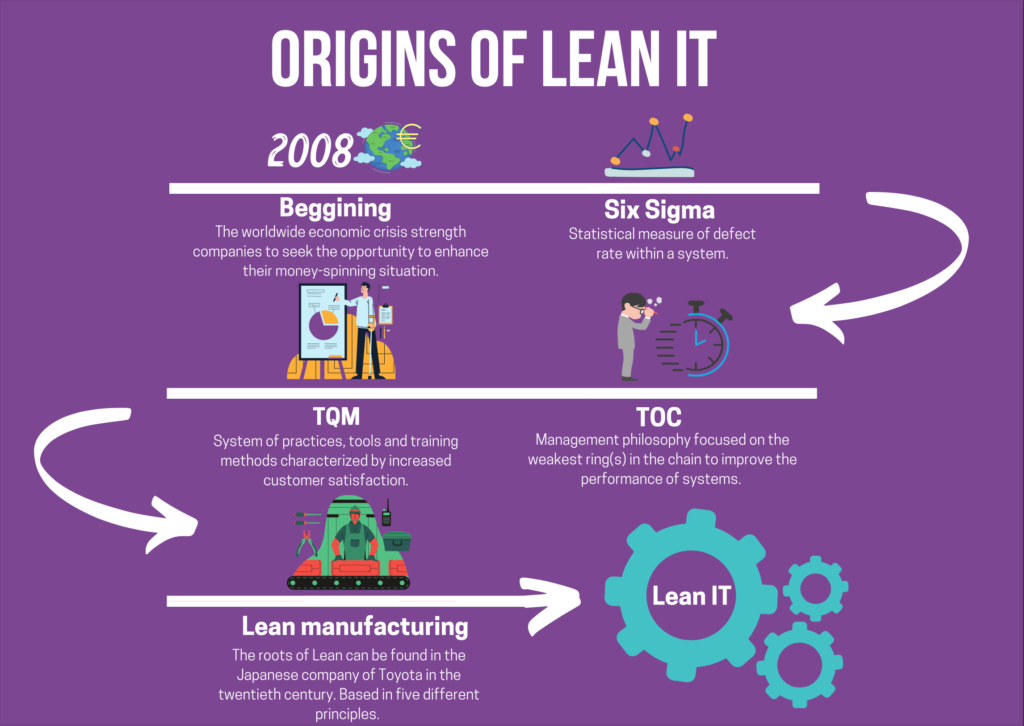Lean IT: Everything you need to know about its evolution


If you are reading this, it is rather because you are interested in Lean IT or you do know nothing about it and want to expand your knowledge in this specific field. Either way, this post aims to explain not just the basics about the evolution of Lean IT practices like what actually is and the benefits but also, to introduce the new concepts that are emerging since last year such as DevOps. Let’s start with the basics.
What is Lean IT exactly?
Lean IT is a series of concepts that allow the application of Lean principles to Information Technology (IT) organizations and companies. This means that we must review processes, methodologies, and investments to ensure that all our resources are focused on adding value to the customer.
Transforming an IT organization to adopt the Lean philosophy can be complicated. It involves changing human behaviors as well as processes and management models. You need workers to:
- Be familiar with the Lean IT techniques that will be implemented to facilitate their adoption.
- Have a continuous improvement orientation and be able to identify and execute improvement initiatives.
- Communicate progress in a positive way.
- Give feedback in an open manner to both team members and managers.
Let’s learn a little more: Origins of Lean IT
To better understand the concept is necessary to know the origin of Lean IT.
In 2008, the global economic crisis intensified and several companies from all walks of life began looking for opportunities to enhance their diversified funds. The result of the effort led to the implementation of modern management methods, these methods are:
- Six Sigma: This concept was developed with the efforts of Bill Smith, a Motorola engineer. The term refers to a statistical measure of the defect rate within the system. It provides a framework for process improvement by providing users with more detailed schematics.
- Theory of Constraints (TOC): This is a management philosophy that focuses on the weakest link in the business chain to improve system performance. Companies in the production and service sectors should focus more on understanding their own structure in the survival process to survive in global competition.
- Total quality management (TQM): It is a system of training practices, tools and methods; Through continuous improvement, all customers are actively involved, thus increasing customer satisfaction.
- Lean manufacturing: The purpose of this document is to illustrate the evolution and complexity of the method to obtain the greatest benefit from occupying new markets. Lean’s roots go back to Toyota in the 20th century. Lean Manufacturing (predecessor of the Toyota Production System): It was created in 1991 by James P. Womack, Daniel T. Jones, and Daniel Roos of the Massachusetts Institute of Technology. They applied 5 principles:
- Determine the value of the product in the eyes of the customer.
- Identify and clarify the value stream of the product.
- Provide a fast and seamless flow of value
- Enable customers to derive value from producers
- Pursue excellence
Below you will find a graph summing up how Lean IT was originated to simply see how it began:


DevOps, Evolution, Kaban, Kaizen, Lean Benefits, Lean It, Lean manufacturing, Lean stages, Manufacturing, Networks, Six Sigma, Techniques, Theory of constraints, TOC, Total quality management, TQM
